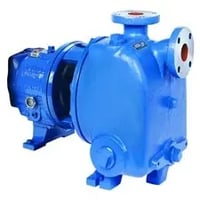Industrial Valves are essential in dairy processing because they are used to control and manage the...
A Guide to Regular Inspection and Maintenance for Wastewater Treatment Valves
Wastewater treatment plants have complex systems that rely on a number of components to function efficiently. Valves are an integral part of controlling the flow of wastewater and sludge. Regular inspection and maintenance of these valves is essential to ensure optimal performance, prevent costly breakdowns, and maintain regulatory compliance. The fluid handling experts at Professional Pump in Michigan, share some best practices for ensuring your valves are performing at their peak.
Regularly Inspect your Control Valves
It is important for wastewater treatment plant operators to regularly inspect the control valves to look for signs of wear and tear, corrosion, and damage such as cracks, pitting, or excessive rust. During the inspection, operators should ensure proper alignment of the valve stem and handles and inspect the valve body for signs of leakage.
If your valves are subjected to extreme temperature or pressure conditions, they require more frequent monitoring. Pushing a valve to its limits can accelerate wear and tear, leading to premature failure.
Regularly Clean the Valves
One of the simplest yet most effective ways to prolong the life of your valves is through regular cleaning. While cleaning frequency can vary based on operating conditions, it's generally recommended to clean valves at least annually. In particularly dirty or dusty environments, more frequent cleaning may be necessary.
To clean your valves, use a soft cloth or wire brush to remove dirt, debris, and corrosion from the valve body. Regular cleaning prevents buildup on the valve stem and other moving parts, ensuring smooth operation and extending the valve's lifespan.
Scheduled Shutdown Maintenance:
Over time, valves can accumulate mineral deposits, rust, and corrosion, which can degrade their performance. Annual plant shutdowns provide an ideal opportunity to conduct thorough valve maintenance.
During these scheduled shutdowns, take the time to:
- Disassemble valves: Access internal components for inspection and cleaning.
- Clean thoroughly: Remove mineral deposits, rust, and debris to restore optimal performance.
- Replace worn parts: Identify and replace any damaged or worn-out metal, rubber, or plastic components.
- Inspect seals and gaskets: Check for signs of deterioration and replace as needed.
By prioritizing valve maintenance during shutdowns, you can extend the lifespan of your equipment, improve operational efficiency, and minimize unexpected downtime.
When to Replace a Valve
It’s important to replace a valve when it shows signs of wear, corrosion, or damage. Key indicators that a valve needs replacement include:
- Visible Leaks: Any fluid leakage from the valve body or connections.
- Corrosion: Rust or pitting on the valve body or internal components.
- Damaged Seals: Worn or deteriorated seals can lead to leaks and reduced performance.
- Operational Difficulty: Stiff or sluggish operation of the valve.
- Excessive Noise: Unusual sounds during valve operation may indicate internal damage.
- Performance Degradation: Inability to maintain desired flow rates or pressure.
By addressing these issues promptly, you can prevent costly failures and ensure the reliable operation of your fluid systems.
The fluid handling experts at Professional Pump in Michigan can assist with maintenance and repair of your pumps and valves. Consult with an expert today to ensure your plant is running at peak performance.



